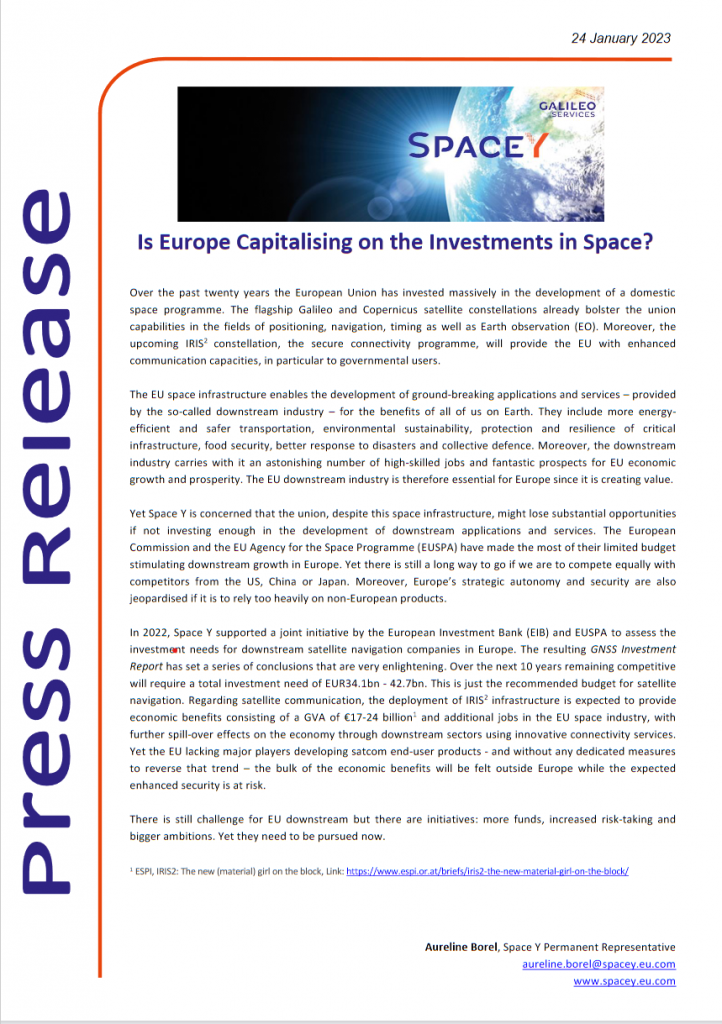
- Category: Latest News
- 2023-01-24
Over the past twenty years the European Union has invested massively in the development of a domestic space programme. The flagship Galileo and Copernicus satellite constellations already bolster the union capabilities in the fields of positioning, navigation, timing as well as Earth observation (EO). Moreover, the upcoming IRIS2 constellation, the secure connectivity programme, will provide the EU with enhanced communication capacities, in particular to governmental users.
The EU space infrastructure enables the development of ground-breaking applications and services – provided by the so-called downstream industry – for the benefits of all of us on Earth. They include more energy-efficient and safer transportation, environmental sustainability, protection and resilience of critical infrastructure, food security, better response to disasters and collective defence. Moreover, the downstream industry carries with it an astonishing number of high-skilled jobs and fantastic prospects for EU economic growth and prosperity. The EU downstream industry is therefore essential for Europe since it is creating value.
Yet Space Y is concerned that the union, despite this space infrastructure, might lose substantial opportunities if not investing enough in the development of downstream applications and services. The European Commission and the EU Agency for the Space Programme (EUSPA) have made the most of their limited budget stimulating downstream growth in Europe. Yet there is still a long way to go if we are to compete equally with competitors from the US, China or Japan. Moreover, Europe’s strategic autonomy and security are also jeopardised if it is to rely too heavily on non-European products.
In 2022, Space Y supported a joint initiative by the European Investment Bank (EIB) and EUSPA to assess the investment needs for downstream satellite navigation companies in Europe. The resulting GNSS Investment Report has set a series of conclusions that are very enlightening. Over the next 10 years remaining competitive will require a total investment need of EUR34.1bn – 42.7bn. This is just the recommended budget for satellite navigation. Regarding satellite communication, the deployment of IRIS2 infrastructure is expected to provide economic benefits consisting of a GVA of €17-24 billion1 and additional jobs in the EU space industry, with further spill-over effects on the economy through downstream sectors using innovative connectivity services. Yet the EU lacking major players developing satcom end-user products – and without any dedicated measures to reverse that trend – the bulk of the economic benefits will be felt outside Europe while the expected enhanced security is at risk.
There is still challenge for EU downstream but there are initiatives: more funds, increased risk-taking and bigger ambitions. Yet they need to be pursued now.
Space Y Press Release can also be found here.